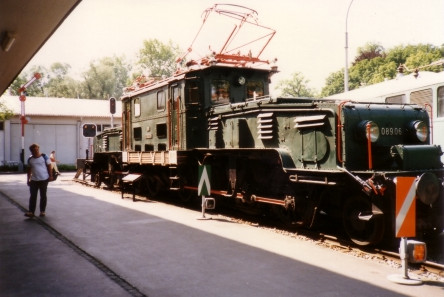"Excursions" of the early
childhood
During the early childhood as a little child the
excursions are not going so far, but mostly end with
the play ground, or may be also at a bigger play
ground, or at a river's beach, or at a lake's beach,
or in a public bath, in a zoo, or in a children's
circus (without carnivores, because carnivores can
provoke a massive fear with little children).
And, when one is going always to the same place, then
the mental enrichment is limited of course, and the
children will soon say that this would be boring for
them. This is a signal that the children are really
suffering "boring" situations and this signal has
really to be taken earnest by the parents because this
shows that the children are ready for more experience
with new things. There should be a "change of
scenery". The parents should collect ides for new
excursions, and when they don't know locations they
can ask the neighbors or can search in the Internet
what would be a good excursion yet.
From 6 years on the classical excursion goes to a
Traffic Museum
From about 6 years on, children can widen their
horizon by well organized excursions showing them the
connections of nature and of technique. A visit in a
Traffic Museum is always a "classical" excursion, but
this visit should not be too long please, but the
visit should be adapted to the children's age. When
several children are members of the excursion they
should be good friends already, and they should have
learnt with children's playing to beware the balance
of mental forces, so this group visit will have only
positive effects:
-- children's group has to
manage their energies in the museum and the children
have to control themselves so there will not be any
misfortunes or "accidents", that means that the
children have to control their group dynamics so the
mental energy is not only developing to an "euphoria"
but also to a certain discipline
-- children visiting for example a traffic museum
automatically will learn what is "history", will learn
that there exist not only one form of a vehicle, but
will learn that fantasy and variations are normal, in
this case with vehicles. This perception of variety
will be transferred also to other subjects of life and
will be realized for example with drawing and painting
etc.
-- therefore parents who are against "road traffic"
should not mean that a visit of a traffic museum would
be something useless, but this visit has also other
qualities for the children which are flowering only
during youth times
-- add to this during the excursion some parents are
discharged when there are children also from other
families in this children's group.
Perhaps certain towns have not detected the value of
such a traffic museum. Such a traffic museum is an
institution of high value, also of high intellectual
value, is provoking the children's brains for thinking
about "history", about technique, about mechanisms,
about situations of traffic etc. Intelligent parents
are also telling the children some stories about
certain vehicles when these vehicles were the actual
vehicles in the parent's lives yet, or later an own
album with sceneries with certain vehicles will be
created.
More museums and excursion
locations
More museums which are very important for children are
for example
-- a puppet museum
-- a sports museum
-- a museum of natural history or also an ethnological
museum, or a museum about primary nations etc.
-- floodgates
-- ports
-- airport
-- zoos
-- farms
-- markets
-- trips to the mountains etc.
It can be clearly stated that
children without these intellectual horizon extensions
by museums are failing in certain affairs of general
education, and therefore also a part of combined
thinking is missing concerning techniques and history.
That means that one part of intelligence developing
between 12 and 17 comes from the mental treasury which
is "installed" during the childhood between 6 and 11,
and the museums play a great role in this development.
Why?
-- because a museum is always there
-- because a museum cannot "walk away"
-- because on a museum can always be stood.
Museums are a very important stabilizing factor in a
childhood when the visit is well performed. When it's
only a "boring" walk and father and mother do never
say anything, this visit will be only a "drag". So,
the visit of a museum must not be only a fulfillment
of one's duty, but the parents have to be present with
all their heart mediating wisdom. And the children
will feel this.
